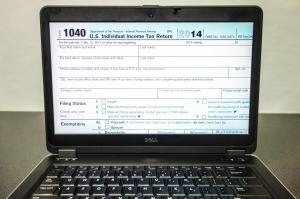In May, the Internal Revenue Service began sending the Economic Impact Payment (EIP) from the CARES Act as a pre-paid debit card to about 4 million qualifying Americans. This was only a small portion of the more than 159 million stimulus check payments the IRS sent out, as most were sent either as a direct deposit if the IRS had bank account information or as a physical check. Americans who did receive the payment as a debit card can use the funds included at any retail location where Visa cards are accepted, or online and at ATMs.
The $2 trillion CARES Act included a one-time payment for $1,200 to individual Americans who filed their federal taxes for 2018 or 2019 and earned $75,000 or less in those tax years. Couples who filed jointly qualified for $2,400 and dependents under 17 qualified for $500. Individuals earning between $75,000 and $99,000 qualified for smaller payments, and any earning over $99,000 did not qualify for any. If the IRS had banking information, these payments were received as direct deposits. If not, they were sent as physical checks. On May 18, the IRS said anyone whose tax return was processed at the Andover, Massachusetts or Austin, Texas IRS Service Center would receive the EIP cards, although it is not clear what was special about either of those centers.
Videos by PopCulture.com
The cards were sent in nondescript white envelopes with “Money Network Cardholder Services” as the return address and no federal markings. The IRS also failed to widely publicize that some would receive their stimulus as a card. This led to several reports of people mistaking their EIP cards for scams. The Consumer Financial Protection Bureau needed to publish a blog post assuring Americans these were real cards and noted they included instructions on how to use them. A real EIP card has the Visa logo and stars in a blue field on the front, and the issuing bank is listed as MetaBank North America. Anyone who threw out their cards can contact MetaBank Customer Service by phone at 800-240-8100. The IRS also set up a dedicated website, EIPcard.com, which lists directions on using the cards.
If Congress does pass another coronavirus stimulus relief package with another stimulus payment and you did receive an EIP card for the first one, it is possible the IRS could issue the second one in the same fashion. Since the first EIP cards were not sent out until mid-May, weeks after some taxpayers received their direct deposit, it could take longer to receive a second one. The IRS still has the “Get My Payment” portal open, which should allow taxpayers to submit their banking information for a future second payment, even if they received their first check in the mail.




